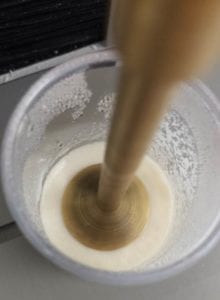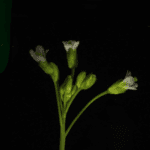Researchers from Agriculture and Agri-Food Canada’s Ottawa Research and Development Centre have published a novel method of assessing tofu texture from different soybean cultivars. The new method differs from convention in that it can operate on a much smaller scale and takes less time.
When testing new soybean cultivars for use in tofu production, it’s best to use as little of the seed as possible since the tests are destructive, and breeding programs have limited material to work with. A common test currently in use, the Harrow tofu test, uses 275-g seed samples to evaluate the texture of tofu produced using soybean lines with different amounts and composition of protein. This is the same amount of seed needed to plant two to three yield trial plots, and it represents a significant sacrifice. The test is important, however, because it allows exporters to report on their seed production to current or potential buyers, typically in Asia.
In the new study, published in the Canadian Journal of Plant Science, researchers have developed a test that uses significantly less seed but produces similar results to the Harrow test. The small-scale test uses the same coagulants, calcium sulphate, and glucono–delta–lactone as the larger test, but requires only 10% as much material.

The newly developed tofu test operates faster and on a much smaller scale than conventionally used tests (Photo | Elroy Cober).
“Small-scale testing means less quantity of grains required and less time for testing, so potential for tofu making can be assessed earlier in the development of a new variety and on a larger number of lines,” explained lead author Judith Frégeau-Reid.
The authors found the small-scale test worked best when used to compare groups of soybean lines with similar seed protein levels and cautioned potential users against comparing textures across widely varying lines. They also encouraged multi-year testing of lines for a thorough evaluation, since results could differ between years.
“We see the small-scale tofu test being used within breeding programs,” said co-author Elroy Cober. “Since the seed sample needed is small, we can sacrifice 30 g for tofu testing but still have enough seed to continue yield testing the following year. Seed supply is particularly in short supply earlier in the breeding program.”
Canada is a major soybean producer, exporting well over $1 billion worth of the crop annually, with production concentrated in Ontario. “Asia is an important export market for tofu soybeans from eastern Canada. [Tofu production] provides a value-added product for soybean growers and exporters,” said Cober. Canadian soybeans are of particular interest to importers for use in the production of Nigari tofu, considered to be a premium product. Canadian soybean production has increased tenfold since 1980, and current forecasts for the crop predict continued steady growth.
Read the full paper: A small-scale tofu test for soybean breeding programs in the Canadian Journal of Plant Science.




